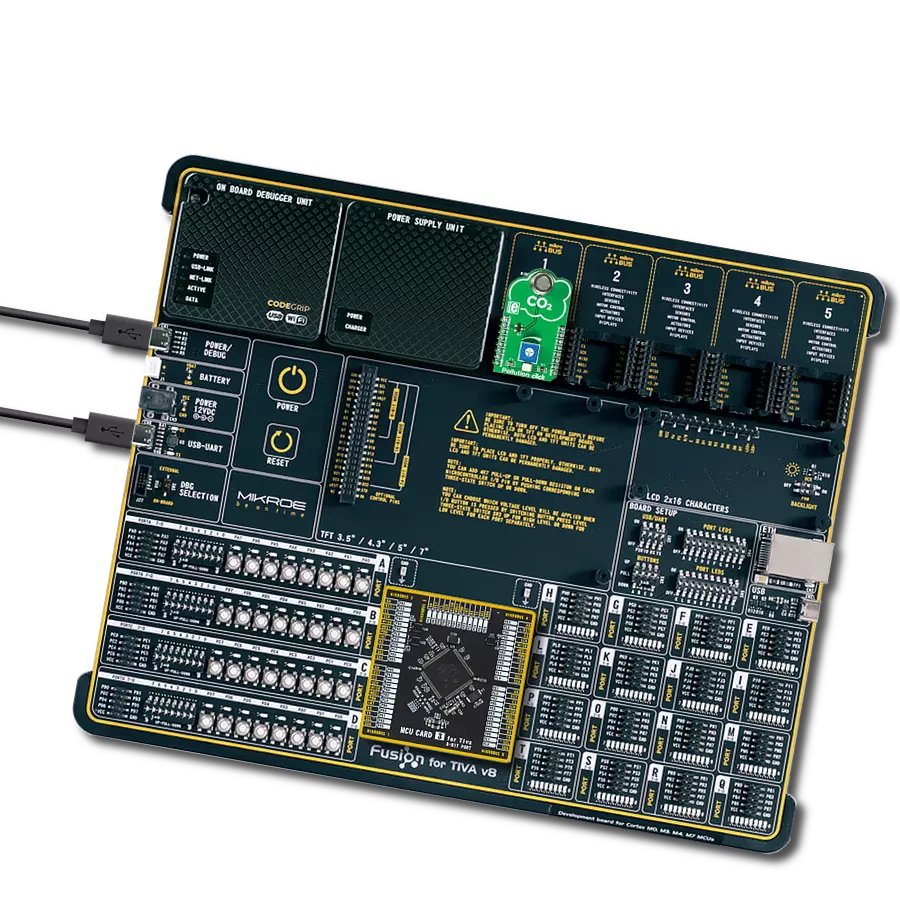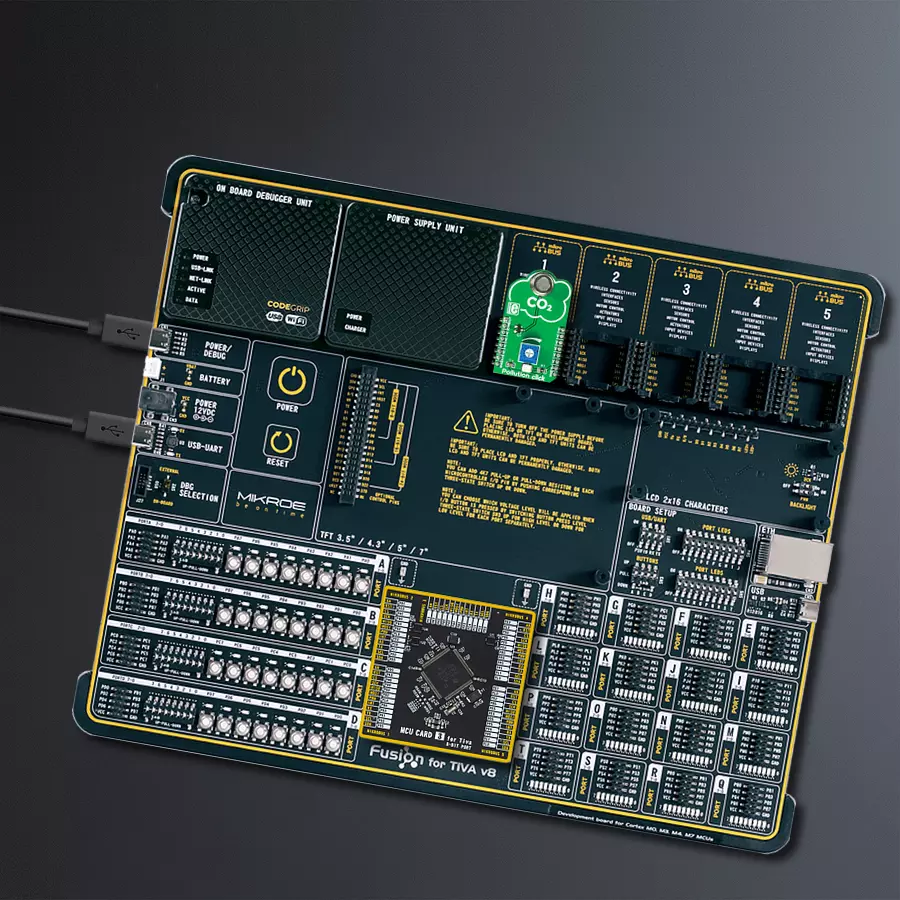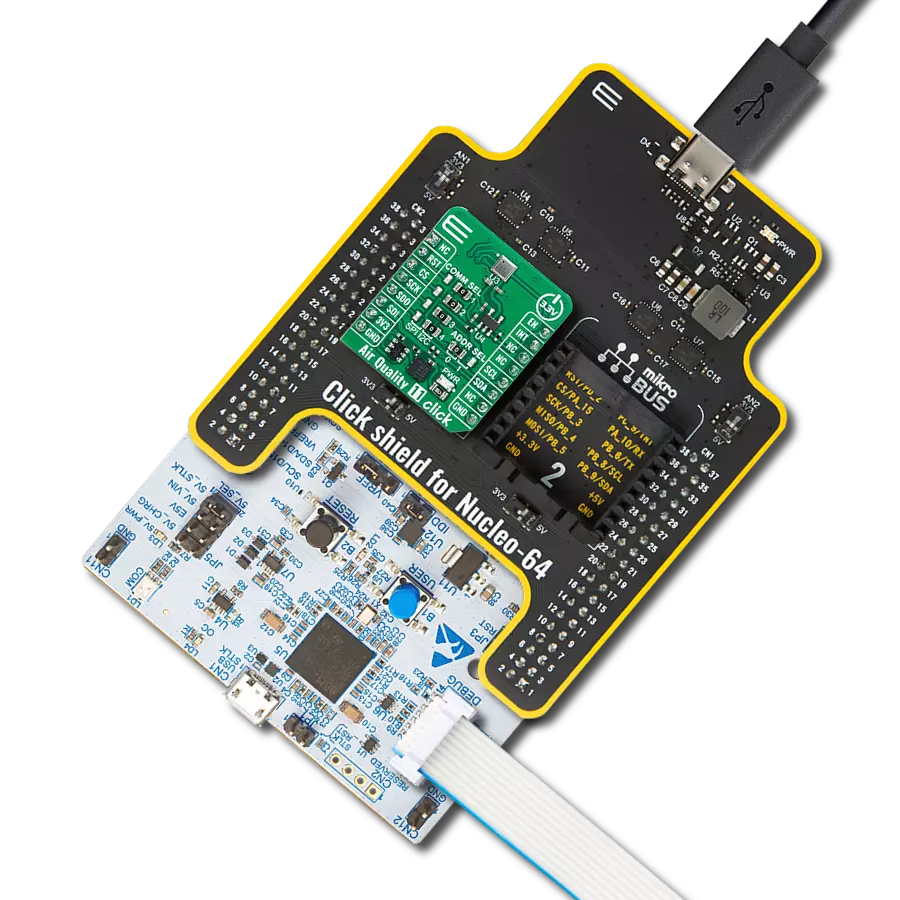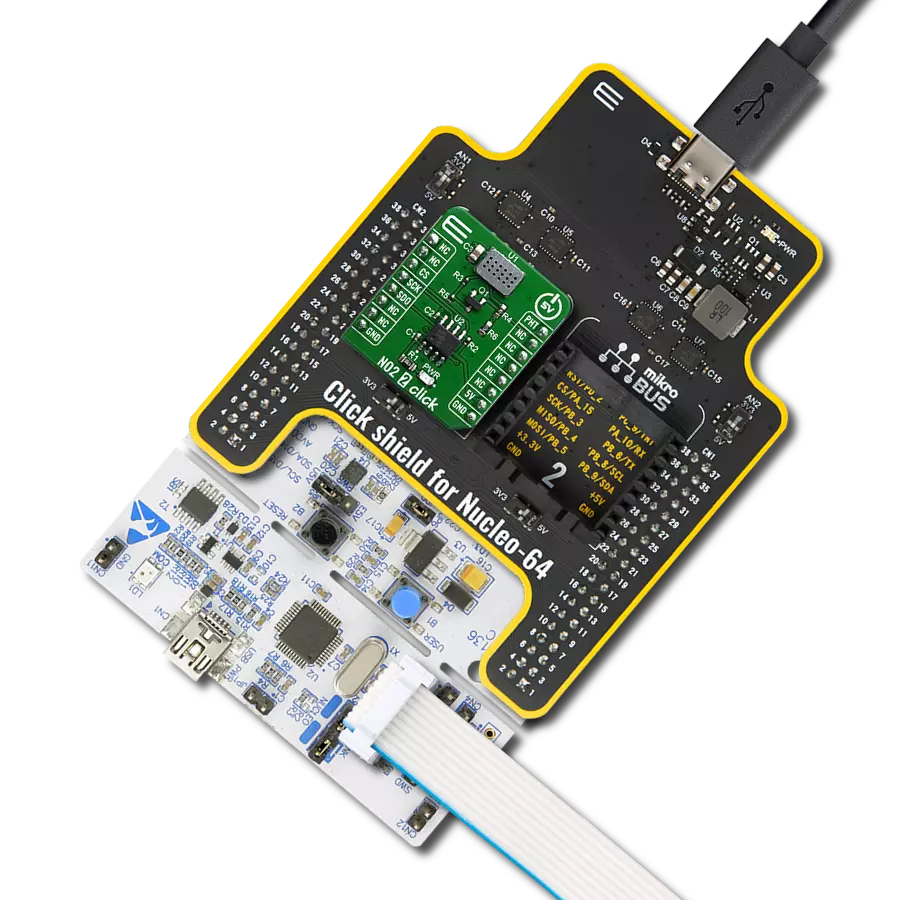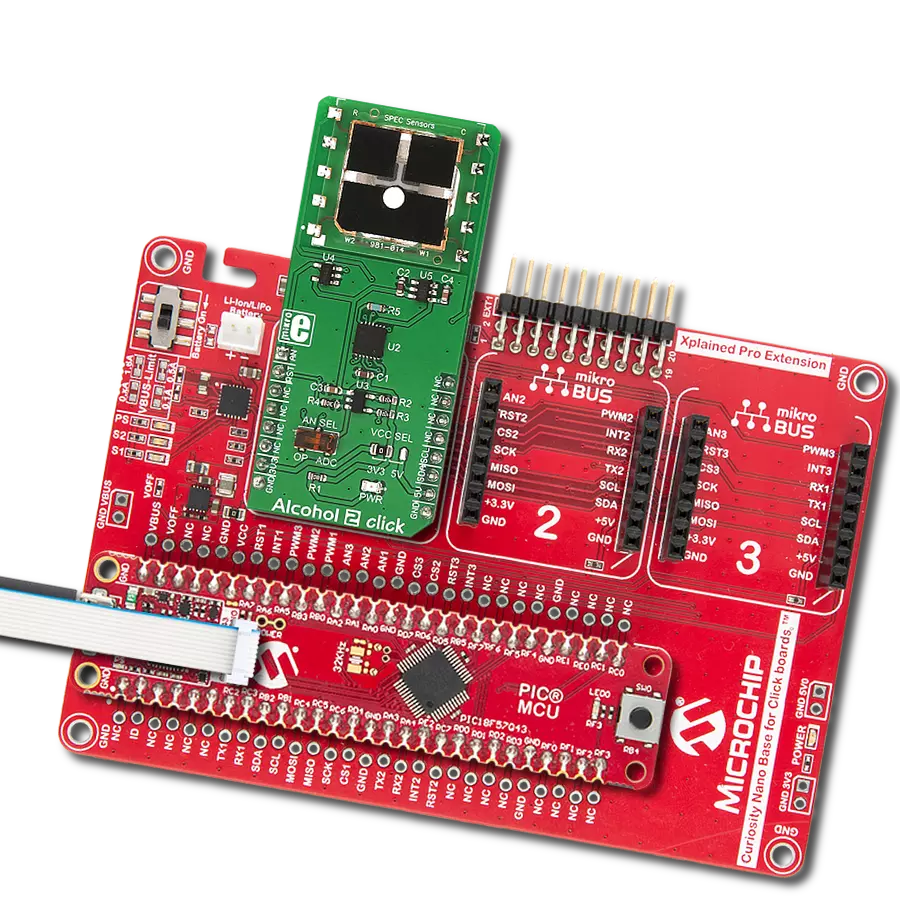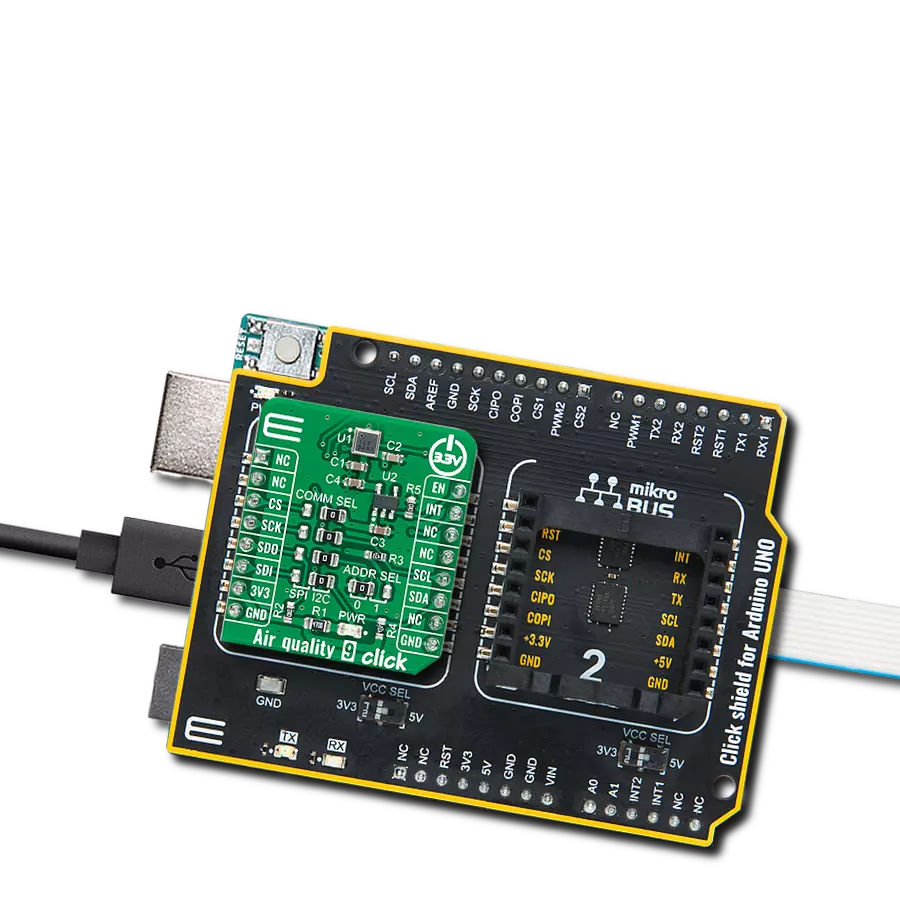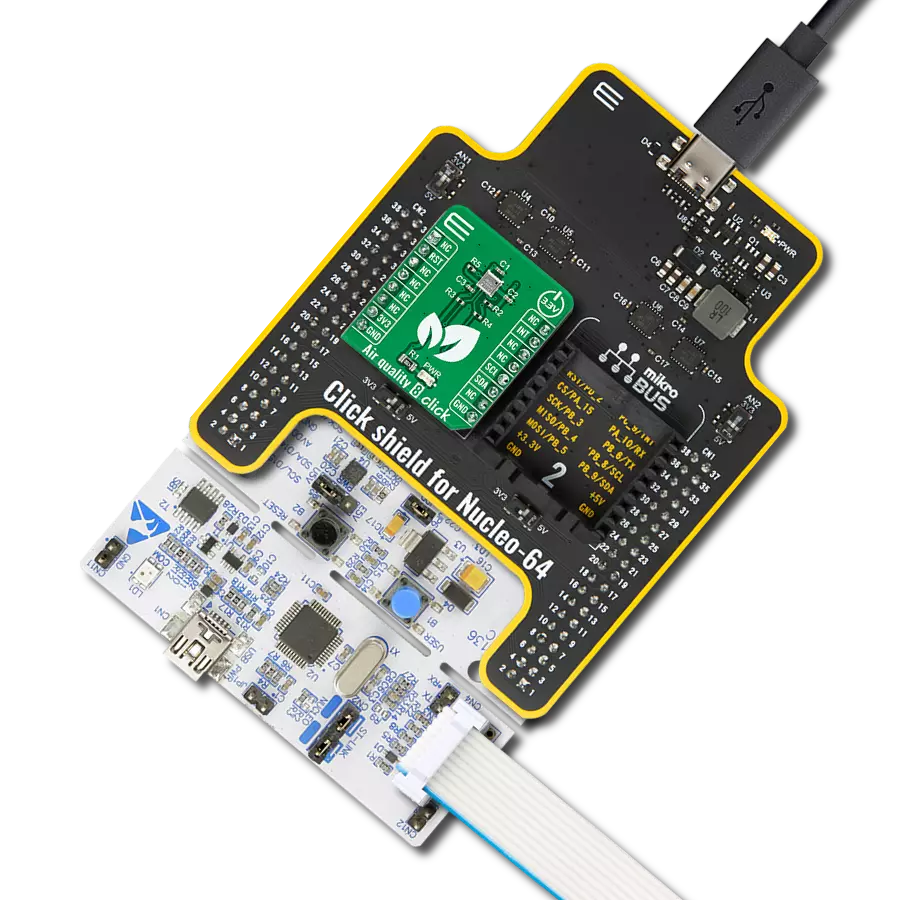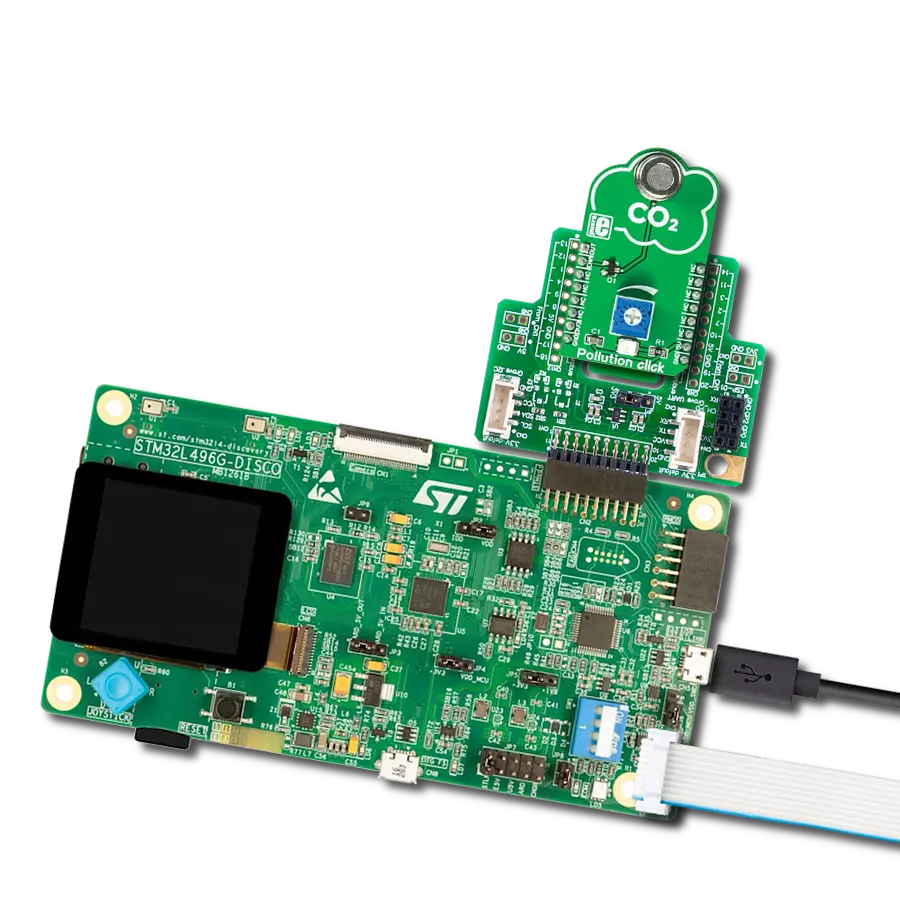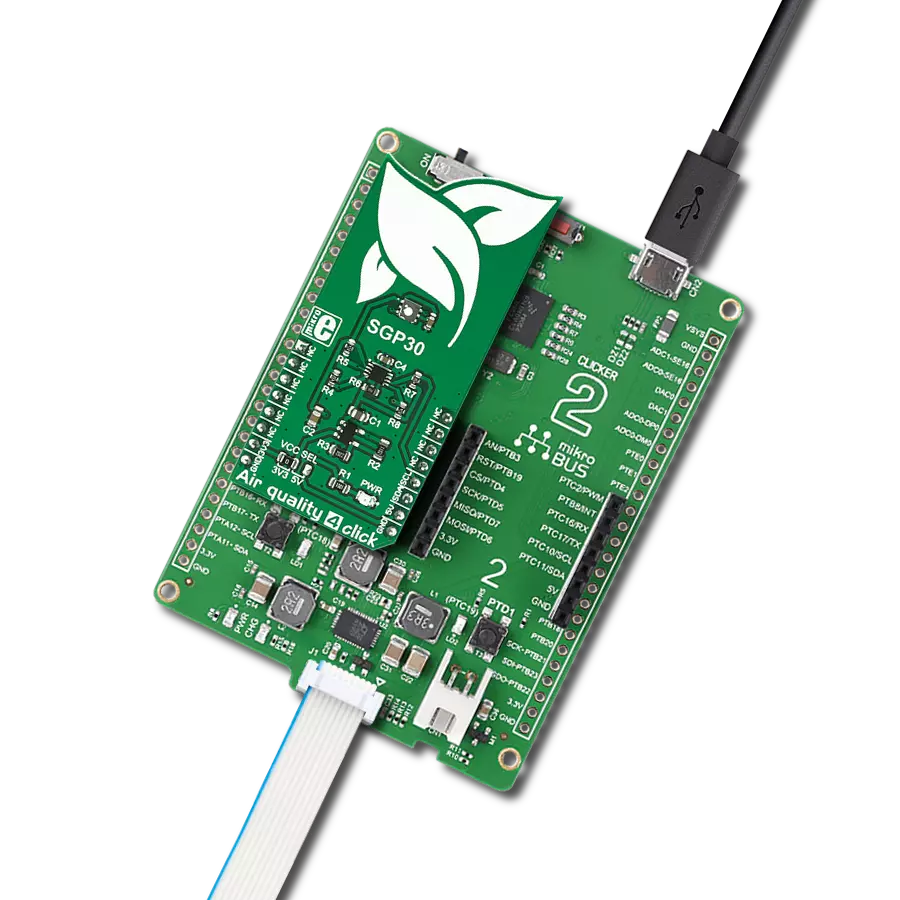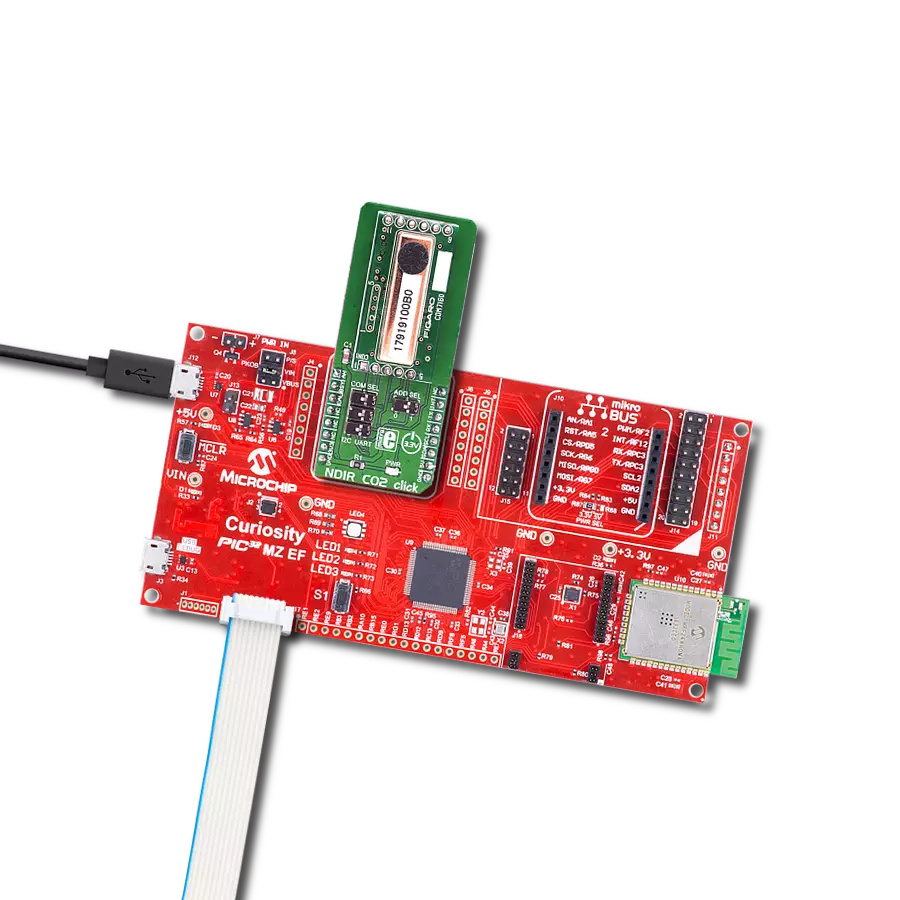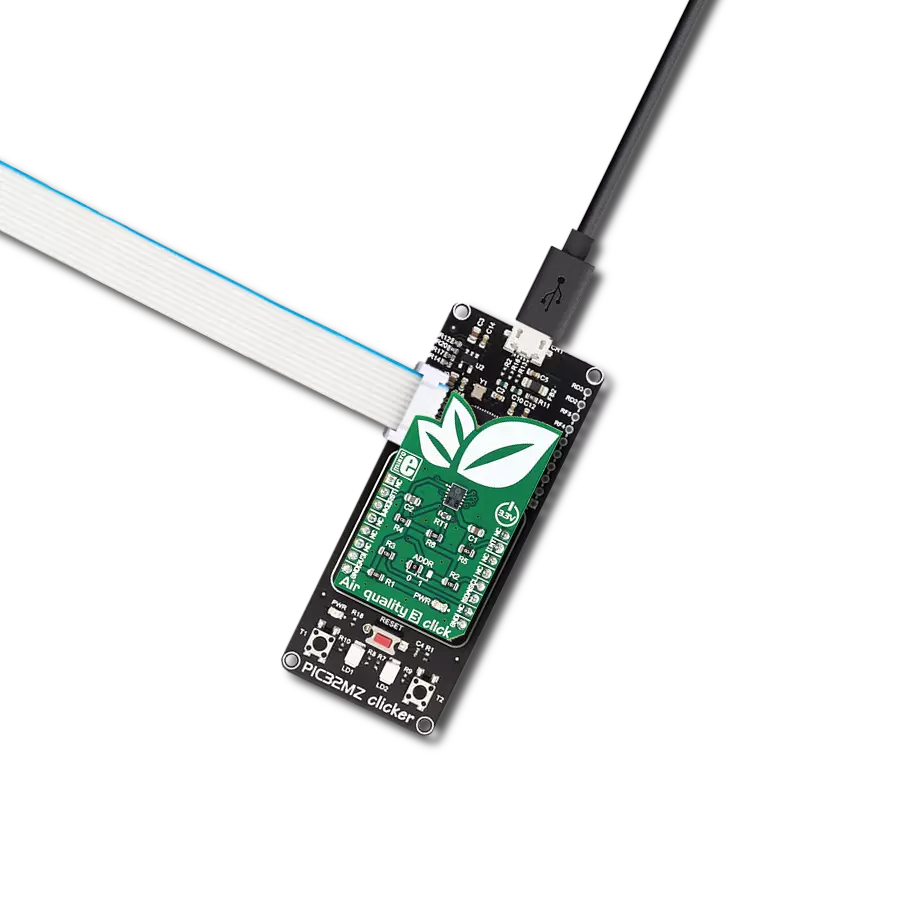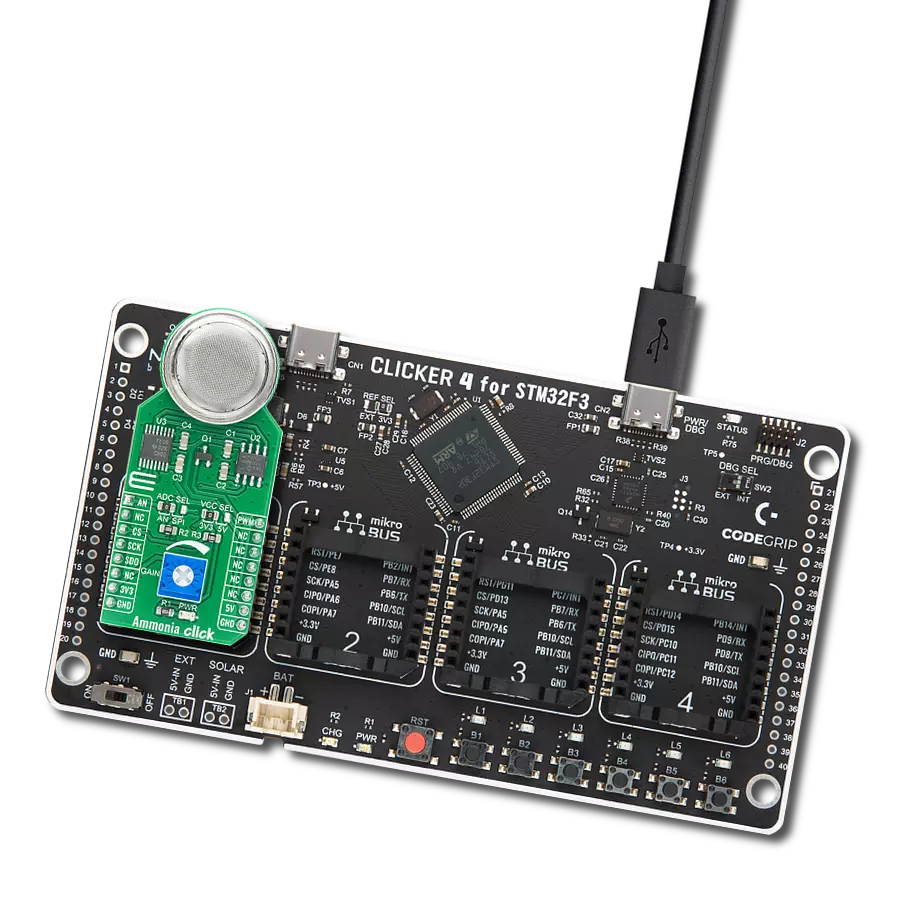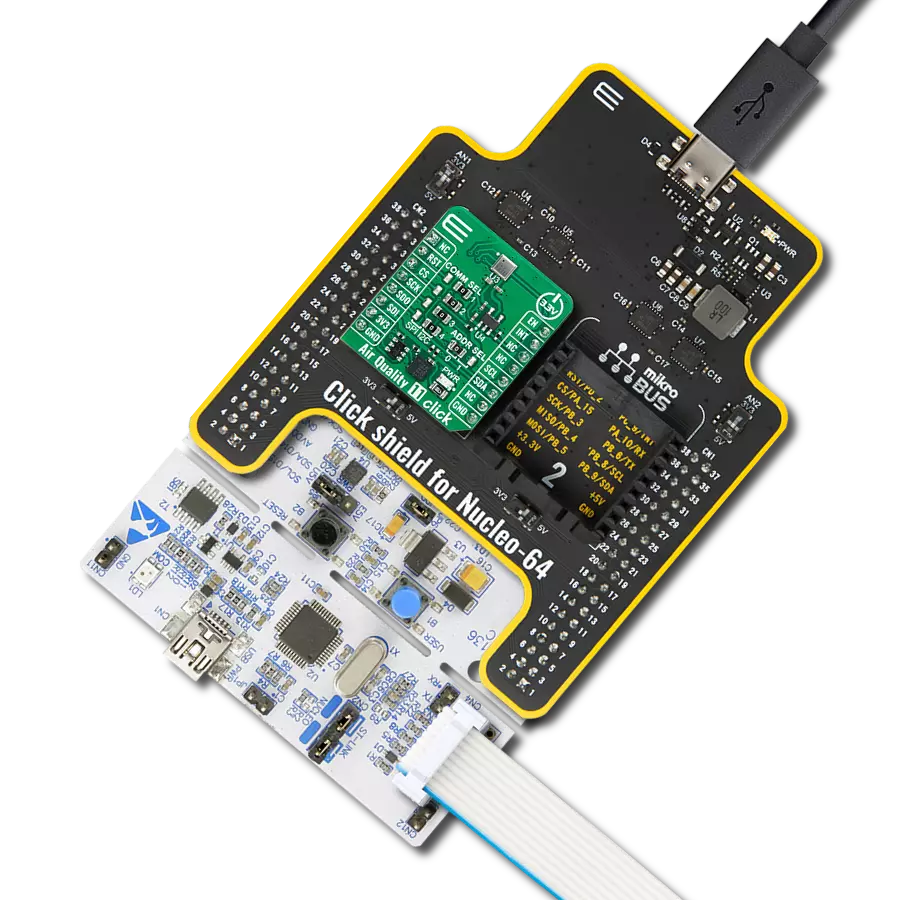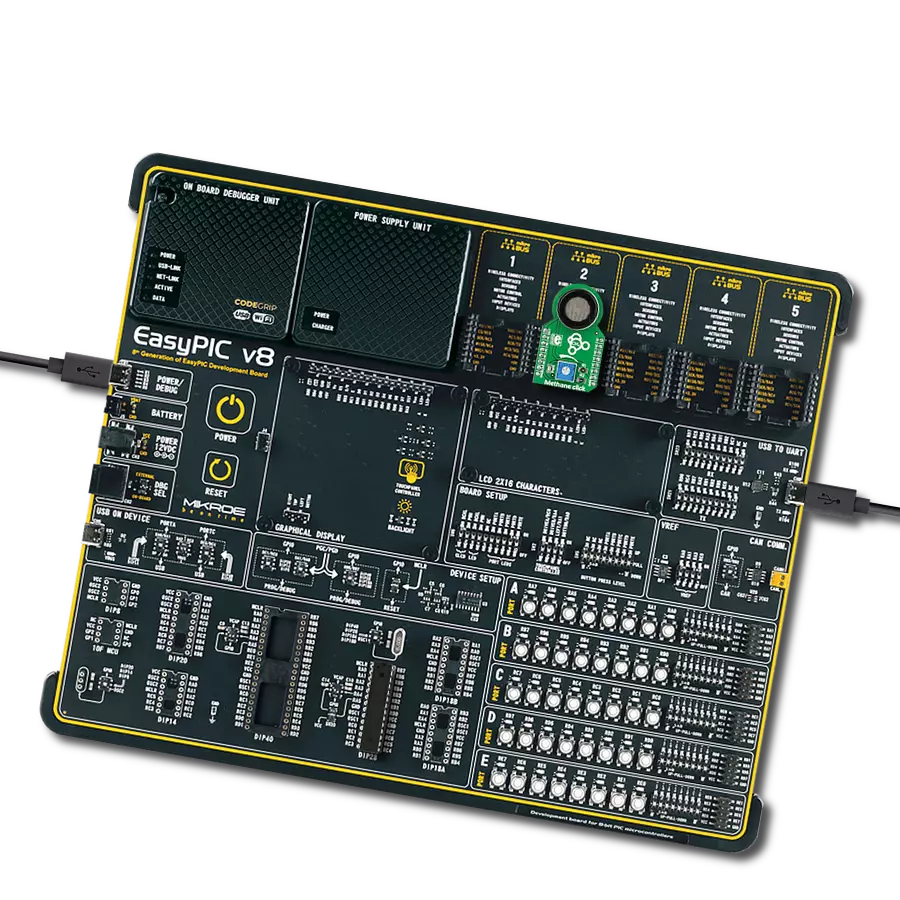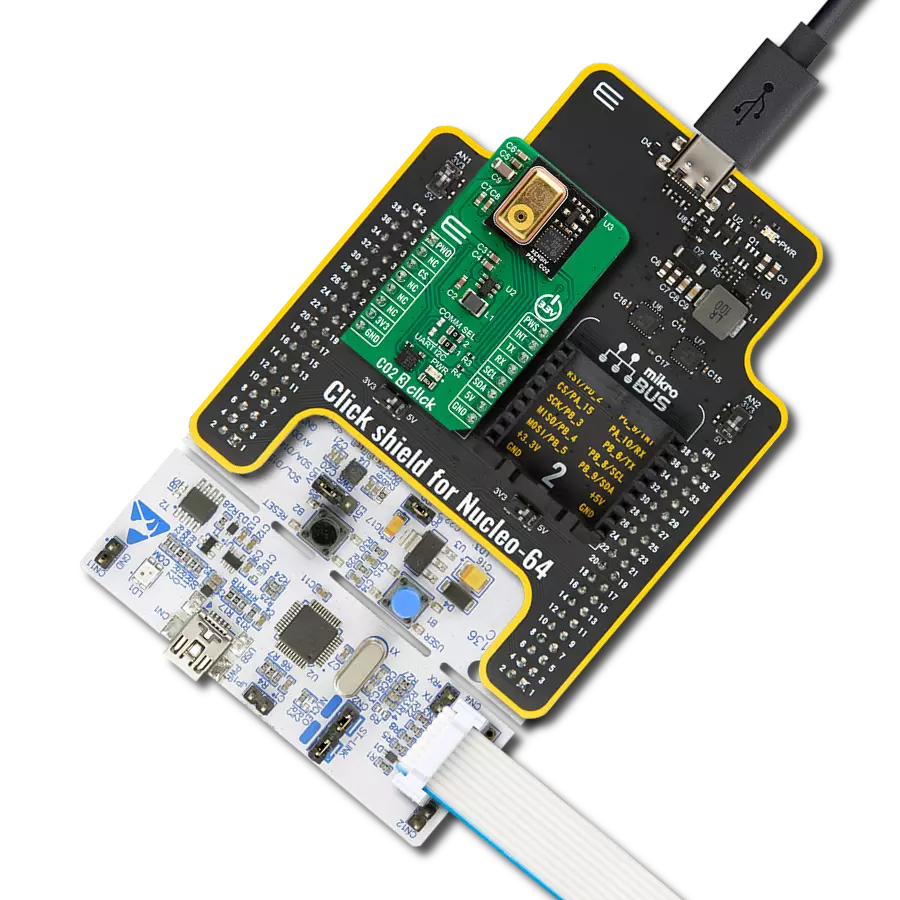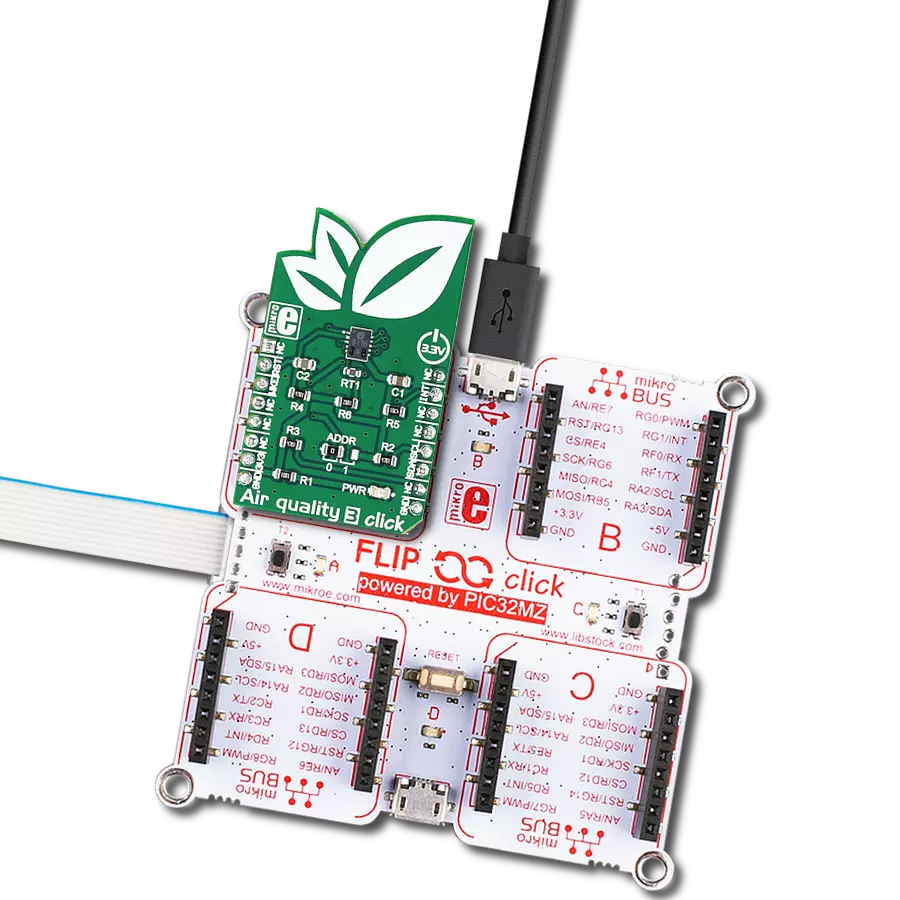Protect your health and well-being by detecting harmful organic gases with our cutting-edge sensing technology
A
A
Hardware Overview
How does it work?
Pollution Click is based on the WSP2110, a VOC gas sensor from Winsen. The MQ-135 can detect the presence and concentration of toxic gases in the air, such as toluene, benzene, methanal, and alcohol. It consists of a heater and metal oxide semiconductor material on the ceramic substrate of subminiature Al2O3, which are fetched out by electrode down-lead and encapsulated in a metal socket and cap. Besides its high sensitivity, the WSP2110 is also characterized by a detection
range from 1 to 50 ppm for toluene, benzene, methanal, and alcohol. The WSP2110 provides an analog representation of polluted concentration in the air sent directly to an analog pin of the mikroBUS™ socket labeled OUT. The analog output voltage the sensor provides varies in proportion to the toxic gas concentration; the higher the toxic gas concentration in the air, the higher the output voltage. Also, this Click board™ has a built-in potentiometer that allows users to
adjust the load resistance of the MQ-135 circuit for optimum performance. The ENA pin can be used to enable the gas sensor. This Click board™ can be operated only with a 5V logic voltage level. The board must perform appropriate logic voltage level conversion before using MCUs with different logic levels. Also, it comes equipped with a library containing functions and an example code that can be used as a reference for further development.
Features overview
Development board
Fusion for TIVA v8 is a development board specially designed for the needs of rapid development of embedded applications. It supports a wide range of microcontrollers, such as different 32-bit ARM® Cortex®-M based MCUs from Texas Instruments, regardless of their number of pins, and a broad set of unique functions, such as the first-ever embedded debugger/programmer over a WiFi network. The development board is well organized and designed so that the end-user has all the necessary elements, such as switches, buttons, indicators, connectors, and others, in one place. Thanks to innovative manufacturing technology, Fusion for TIVA v8 provides a fluid and immersive working experience, allowing access
anywhere and under any circumstances at any time. Each part of the Fusion for TIVA v8 development board contains the components necessary for the most efficient operation of the same board. An advanced integrated CODEGRIP programmer/debugger module offers many valuable programming/debugging options, including support for JTAG, SWD, and SWO Trace (Single Wire Output)), and seamless integration with the Mikroe software environment. Besides, it also includes a clean and regulated power supply module for the development board. It can use a wide range of external power sources, including a battery, an external 12V power supply, and a power source via the USB Type-C (USB-C) connector.
Communication options such as USB-UART, USB HOST/DEVICE, CAN (on the MCU card, if supported), and Ethernet is also included. In addition, it also has the well-established mikroBUS™ standard, a standardized socket for the MCU card (SiBRAIN standard), and two display options for the TFT board line of products and character-based LCD. Fusion for TIVA v8 is an integral part of the Mikroe ecosystem for rapid development. Natively supported by Mikroe software tools, it covers many aspects of prototyping and development thanks to a considerable number of different Click boards™ (over a thousand boards), the number of which is growing every day.
Microcontroller Overview
MCU Card / MCU
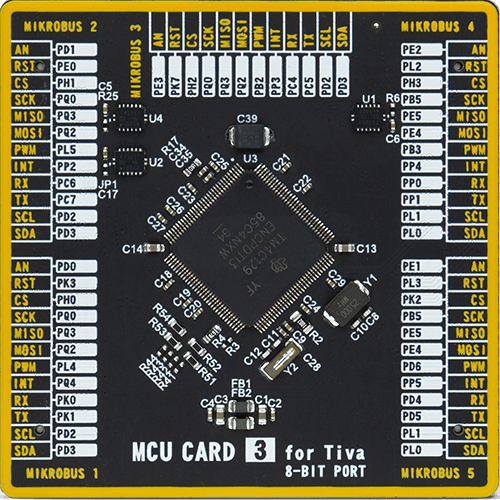
Type
8th Generation
Architecture
ARM Cortex-M4
MCU Memory (KB)
1024
Silicon Vendor
Texas Instruments
Pin count
128
RAM (Bytes)
262144
Used MCU Pins
mikroBUS™ mapper
Take a closer look
Click board™ Schematic

Step by step
Project assembly
Software Support
Library Description
This library contains API for Pollution Click driver.
Key functions:
pollution_generic_read- This function read ADC datapollution_measure_load_voltage- This function gets load voltage from read ADC valuepollution_get_corrected_resistance- This function gets the corrected resistance of the sensor
Open Source
Code example
The complete application code and a ready-to-use project are available through the NECTO Studio Package Manager for direct installation in the NECTO Studio. The application code can also be found on the MIKROE GitHub account.
/*!
* \file
* \brief Pollution Click example
*
* # Description
* Pollution Click carries the VOC gas sensor and has high sensitivity to organic gases
* such as methanal (also known as formaldehyde), benzene, alcohol, toluene, etc.
*
* The demo application is composed of two sections :
*
* ## Application Init
* Application Init performs Logger and Click initialization.
*
* ## Application Task
* This is an example which demonstrates the usage of Pollution Click board.
* Pollution Click reads ADC value, load voltage from ADC value, and reads corrected
* resistance of the sensor where results are being sent to the UART terminal
* where you can track changes.
*
* \author Mihajlo Djordjevic
*
*/
// ------------------------------------------------------------------- INCLUDES
#include "board.h"
#include "log.h"
#include "pollution.h"
float value_volt;
float value_res;
// ------------------------------------------------------------------ VARIABLES
static pollution_t pollution;
static log_t logger;
// ------------------------------------------------------ APPLICATION FUNCTIONS
void application_init ( void )
{
log_cfg_t log_cfg;
pollution_cfg_t cfg;
/**
* Logger initialization.
* Default baud rate: 115200
* Default log level: LOG_LEVEL_DEBUG
* @note If USB_UART_RX and USB_UART_TX
* are defined as HAL_PIN_NC, you will
* need to define them manually for log to work.
* See @b LOG_MAP_USB_UART macro definition for detailed explanation.
*/
LOG_MAP_USB_UART( log_cfg );
log_init( &logger, &log_cfg );
log_info( &logger, "---- Application Init ----" );
Delay_ms ( 1000 );
// Click initialization.
pollution_cfg_setup( &cfg );
POLLUTION_MAP_MIKROBUS( cfg, MIKROBUS_1 );
pollution_init( &pollution, &cfg );
log_printf( &logger, "-------------------------------------\r\n" );
log_printf( &logger, "---------- Pollution Click ----------\r\n" );
log_printf( &logger, "-------------------------------------\r\n" );
Delay_ms ( 1000 );
pollution_default_cfg( &pollution );
Delay_ms ( 1000 );
log_printf( &logger, "--------- ADC Initializated ---------\r\n" );
log_printf( &logger, "-------------------------------------\r\n" );
Delay_ms ( 1000 );
}
void application_task ( void )
{
pollution_data_t tmp;
tmp = pollution_generic_read( &pollution );
log_printf( &logger, " ADC value : %u ppm\r\n", tmp );
Delay_ms ( 1000 );
value_volt = pollution_measure_load_voltage( &pollution );
log_printf( &logger, " Load voltage : %.2f V\r\n", value_volt );
Delay_ms ( 1000 );
value_res = pollution_get_corrected_resistance( &pollution );
log_printf( &logger, " Corrected resistance : %.2f kOhm\r\n", value_res );
log_printf( &logger, "-------------------------------------\r\n" );
Delay_ms ( 1000 );
}
int main ( void )
{
/* Do not remove this line or clock might not be set correctly. */
#ifdef PREINIT_SUPPORTED
preinit();
#endif
application_init( );
for ( ; ; )
{
application_task( );
}
return 0;
}
// ------------------------------------------------------------------------ END
